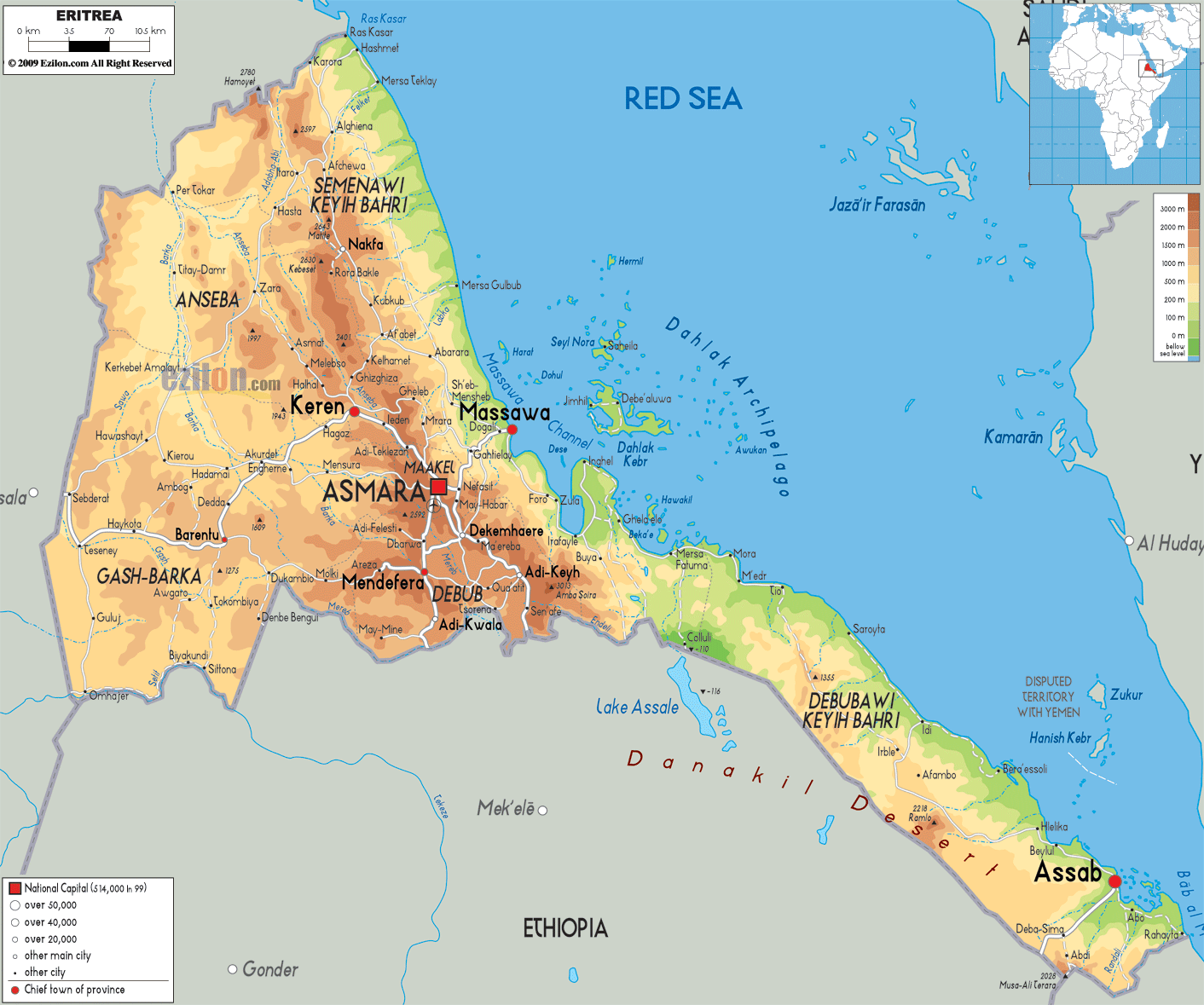Abiy Ahmed is using Eritrea and ownership of the Red Sea to divert attention from the resistance to his rule by paramilitary forces and Ethiopia’s intractable ethnic challenges. With governance over the whole country increasingly tenuous, the prime minister is looking for a unifying narrative to distract Ethiopians from their internal divisions, writes Yohannes Woldemariam.
The Ethiopian state is struggling to maintain the monopoly of force across its territory. There are armed resistances in the Amhara and Oromia regions, and an attempted resolution with the insurgency Oromo Liberation Front failed miserably. Meanwhile, the Special Forces (Liyu) have established their own authority within the ethnically organised Killils (regions), and in some areas of the country they wield power that rivals the Ethiopian National Defence Forces (ENDF). The Liyu Police were transformed into Liyu Forces in 2007. They were based in the Somali region and the late Ethiopian Prime Minister Meles Zenawi decided to use them in counterinsurgency efforts against the Ogaden National Liberation Front and Al-Shabab in neighbouring Somalia. From its origins in the Somali region, the Liyu forces spread to other regions of Ethiopia.
Since the Prosperity Party of Prime Minster Abiy Ahmed assumption of power in 2018, clashes over boundaries and identity questions have intensified. There has been a long-standing dispute between Oromia and the Somali region over land, which worsened in 2017 and caused the displacement of about three million people.
Across Ethiopia, the rights of ethnic groups residing in territories where they’re considered non-indigenous are regularly violated, and inter-ethnic fighting has left millions of people internally displaced.
Brief history of Ethiopian federalism
This issue of “nations and nationalities” was one of the most contentious issues during the Ethiopian student movement of the 1960s. The late Marxist student leader Walleligne Mekonnen argued that there were many nations and peoples within Ethiopia, but social mobility was dependent on compliance with Amhara culture.
The Tigrayan People’s Liberation Front (TPLF) was founded in 1975 to demand self-determination for Tigray, which has wavered between demands for secession and or greater autonomy at different times. Upon assuming national power in 1991, the TPLF hastily instituted a system of ethnic federalism to try to respond to the various ethnic challenges. Sub-national regions in Ethiopia were established along ethnic lines. As a result, questions of land ownership or belonging to a particular region are a matter of identity rather than administration.
Ethiopia has a total of twelve regions. The Southern Region, which consists of 55 ethnic groups, has seen demands from the Sidama for a separate regional status after they succeeded in 2020 following deadly clashes with the Wolayita. The Gurage are asking for Kilil status as well, as are several other groups. There are over 85 languages in Ethiopia and ethnic groups like the Sidama and the Gurage resent being grouped by geography (the Southern Region) rather than being given recognition like the Amhara, Afaan Oromo, Tigrayans and Somalis based on their language and ethnicity.
The ENDF and Fanno forces (an Amhara paramilitary group) fought side by side against the Tigrayan Defence Forces (TDF). In 2019, Abiy Ahmed praised the Fanno for their role in bringing change to the region. Today, Fanno is engaged in a war against the federal government. It began in April 2022 when many Fanno fighters were arrested. The rift worsened after the Pretoria Agreement. The Fanno resented that they were not represented at Pretoria and that the agreement left their dispute with Tigray over disputed areas in limbo. The decision to dissolve and disarm the Fanno Forces exacerbated the gap.
There is fragmentation within the regions and freedom of movement for different groups across the country is increasingly dangerous.
Ethiopian-ness
Nations with many different ethnic groups can develop a national culture around shared history or heroes but Ethiopia has found it difficult to find common shared references.
For some, Ethiopian nationalism is timeless, an ancient culture in a never colonised land. For others, Ethiopian nationalism is Amhara ethnic nationalism in disguise. For many in Ethiopia, the social cement that creates and sustains identity lies in the family, ethnicity, or religion, not in statehood or nationhood. The polarisation has reached dangerous levels.
The weakness of central state institutions in Ethiopia combined with a leader who has by most accounts failed Ethiopians is putting the future of the country in serious question. Ad hoc military strategies may address a problem in the immediate term, but cannot, however, resolve the problems of weak state legitimacy and capacity.
Abiy is offering a diversionary tactic from his internal woes by scapegoating Eritrea and promising the Ethiopian people ownership of parts of the Red Sea. For the time being, it seems to be working for him. Now, even some of the Tigrayan elite are making statements suggesting support for the Red Sea agenda of a man who they described as genocidaire only a year ago.
The Red Sea issue is further exasperated by external actors like the UAE supplying Abiy with weapons. The consequences can only become calamitous if a war breaks out. In a country with several armed groups and a region with weak stares and terrorist organisations, a war could wreak havoc on this geopolitical chokepoint.
Photo credit: Przemek Pietrak used with permission CC BY 2.0 DEED






